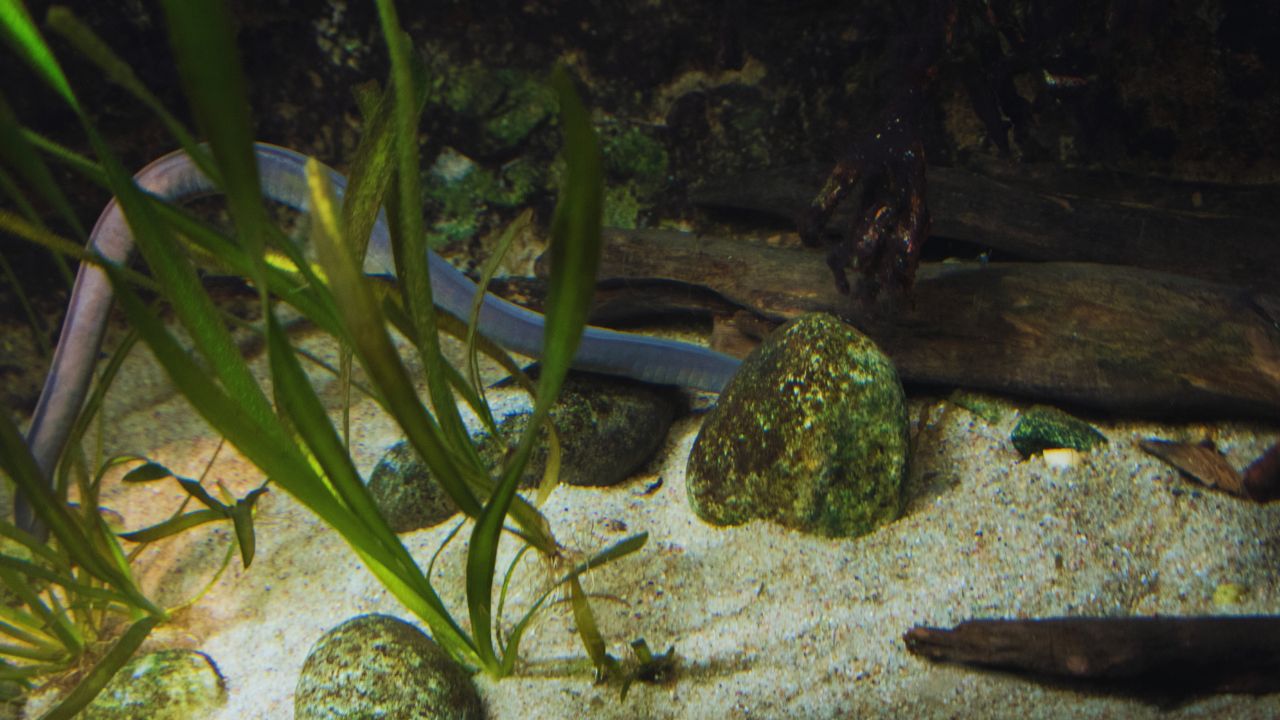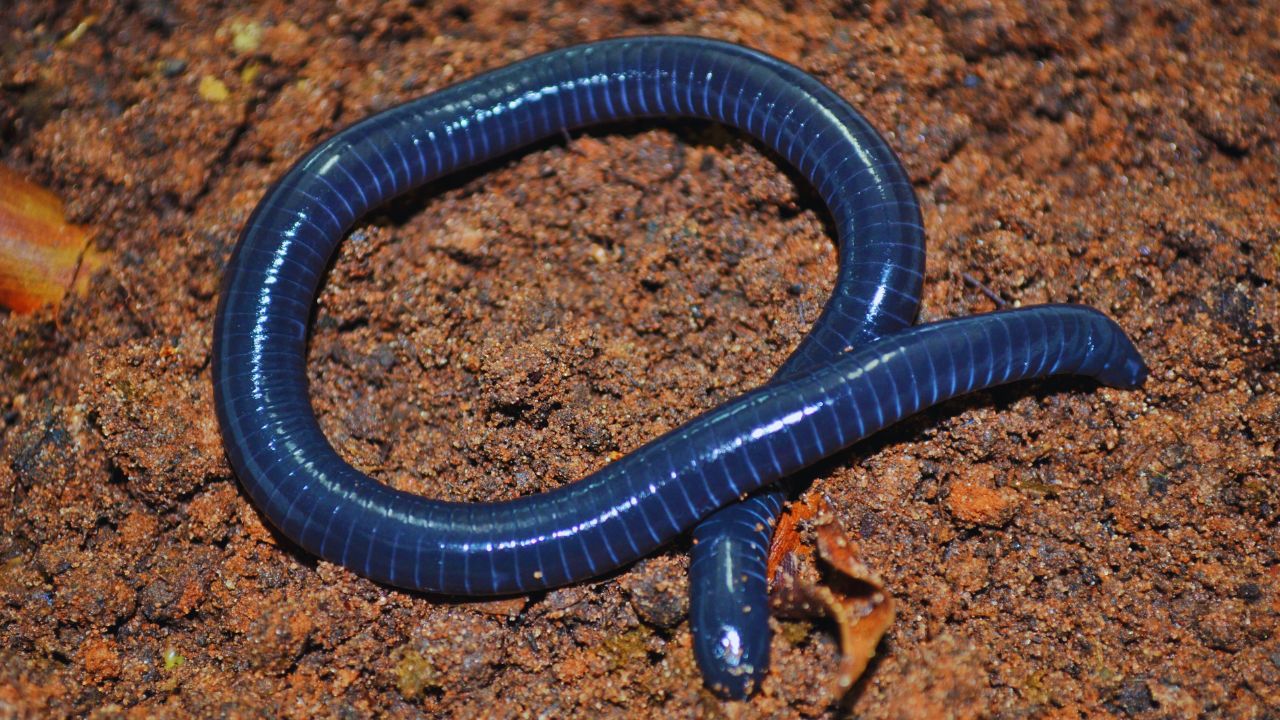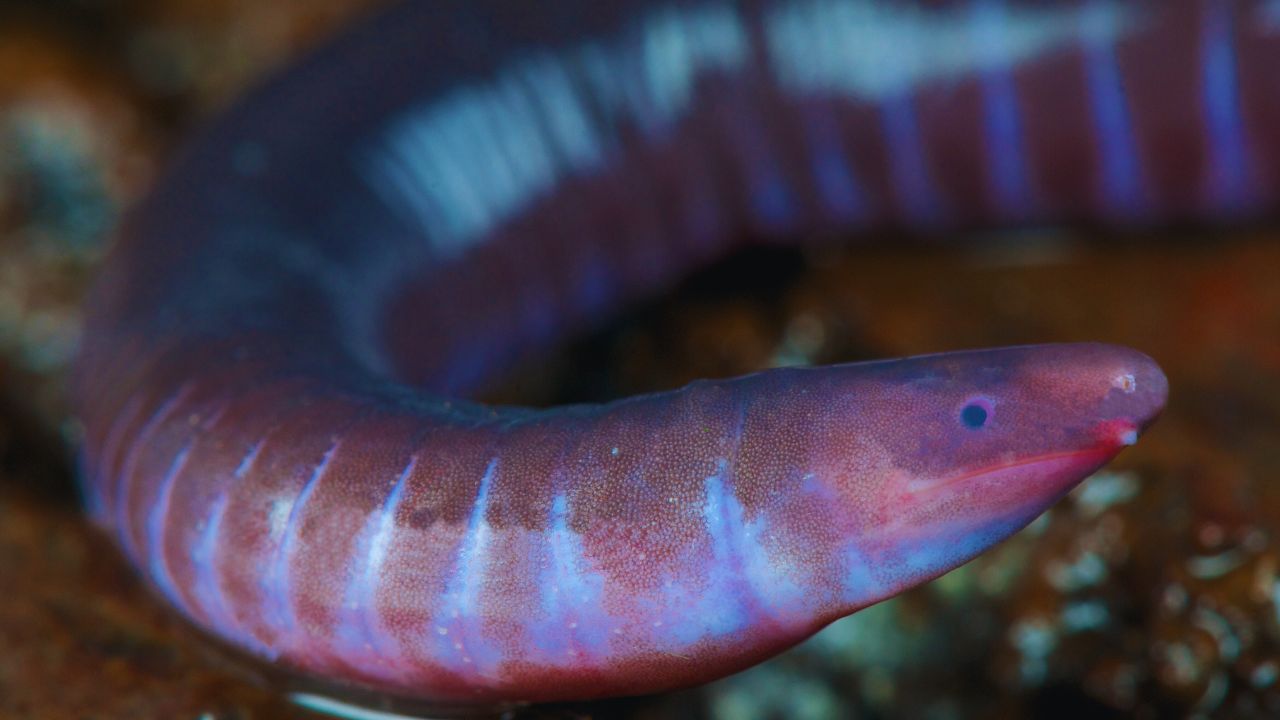Caecilians, a class of amphibians that are sometimes overlooked in favour of their more well-known relatives, salamanders and frogs, have a variety of amazing adaptations that are essential to their survival as predators. These elongated, limbless frogs have developed special methods for catching food since they live in underground habitats. The intricate ways in which caecilians catch their prey and the scientific ideas behind their unique techniques will be examined in this in-depth examination.

Anatomical Modifications for Catching Prey
One of the main components of caecilians’ predatory approach is their unique shape, which is defined by their elongated, limbless bodies. Their bodies are split into many ring-like pieces called annuli, which are coated in a smooth, wet skin. Their ability to travel through dirt and other subterranean settings is facilitated by these annuli, which also allow for efficient navigation and prey capture.
Adaptation to different senses is a remarkable characteristic of caecilians. In contrast to other amphibians, caecilians have no external eyes. Instead, they have a highly specialised sensory device called a tentacle that is situated between the nose and the eye socket. Because of the extraordinarily sensitive sensory receptors on this tentacle to chemical signals in their surroundings, caecilians are able to locate prey even in total darkness.
Anatomical and Sensory Adaptations
| Adaptation | Description | Function |
|---|---|---|
| Elongated Body | Limbless, smooth, and segmented body. | Facilitates navigation through soil and narrow spaces. |
| Tentacle | Sensory organ between the eye and nostril. | Detects chemical cues from prey, aiding in prey localization. |
| Mechanoreceptors | Sensory receptors in the skin that detect vibrations. | Senses prey movements and vibrations in the substrate. |
| Conical Teeth | Sharp, conical teeth adapted for gripping. | Anchors and holds onto prey effectively. |
| Muscular Body | Highly flexible and muscular structure. | Allows for constriction and immobilization of prey. |
Techniques for Identifying and Locating Prey
Caecilians are mainly found in underground habitats with little sight. In such circumstances, their unique sensory capabilities are essential for detecting prey. One of the most important organs for chemoreception is the tentacle, which extends from the head. Even when it is buried deep under the earth or concealed under rubble, it is still capable of sensing the chemical signals given by possible prey.

Caecilians use their sensitive skin in addition to their tentacles to sense vibrations in the substrate they are living in. Mechanoreceptors embedded in the skin allow it to detect minute vibrations brought on its prey’s movements. Being able to detect vibrations is especially useful in situations when there are little or no visual indications.
Methods of Catching Prey
When caecilians see prey, they use a mix of their physical modifications and unique behaviours to catch it. The caecilian’s elongated body enables it to travel quickly into small holes. A caecilian strikes quickly and precisely once it has found its victim. Its wide-open jaws, designed for gripping, let it to swallow its prey.

Caecilians have a jaw structure that is specifically designed for their eating mode. Sharp, conical teeth that are intended to anchor and keep the prey in place rather than for chewing are lined up along the jaws. The caecilian can successfully secure its capture because to its architecture. The caecilian uses its muscular body to provide a constriction force on the prey after it has been grasped, preventing it from fleeing.
Prey Detection and Capture Mechanisms
| Phase | Method | Details |
|---|---|---|
| Detection | Chemoreception | The tentacle detects chemical signals from potential prey. |
| Detection | Vibration Sensing | Sensitive skin picks up vibrations from prey movements. |
| Capture | Rapid Strike | Caecilian strikes quickly to engulf prey. |
| Capture | Jaws and Teeth | Jaws with sharp, conical teeth grip and hold the prey. |
| Contraction | Constriction | Muscular body exerts force to prevent prey escape. |
Scientific Views on the Capture of Prey by Caecilians
The unique ways in which caecilians catch their prey have spurred a number of scientific investigations into the evolutionary benefits that these animals may provide. The idea that these adaptations are direct reactions to the difficulties of living below is one that is generally acknowledged. The peculiar challenges of the subterranean habitat, such limited space and poor vision, have prompted the development of caecilian prey capturing techniques.
It is thought that the tentacle’s function in chemoreception is an evolutionary adaptation that helps caecilians find prey more easily in enclosed, dark spaces. Caecilians may recognise the presence of prey without depending on visual cues, which are often rendered useless in their environment, by sensing chemical signals.

Analogously, the capacity to perceive vibrations via the skin is seen as an adaptation to the low light levels found in underground habitats. Because vibrations provide vital information about the location and motion of prey, caecilians are able to react swiftly and effectively.
It is thought that the utilisation of constriction tactics and the distinct jaw shape are evolutionary adaptations meant to improve the effectiveness of prey capture. Conical teeth are most suited for seizing and paralysing prey, and constriction keeps the prey firmly in place. These modifications most likely developed in response to the need for efficient feeding techniques in the cramped conditions of underground homes.
Evaluation in Comparison to Other Amphibians
It is helpful to contrast caecilian prey capture techniques with those of other amphibians in order to have a better understanding of how unique they are. Most amphibians, in contrast to caecilians, are not suited to a subterranean existence and use distinct techniques to hunt prey. Many amphibians use fast attacks or tongue protrusion in combination with visual cues to entice prey.
Caecilians, on the other hand, have evolved unique adaptations for their subterranean lifestyle. The dependence on vibration sensing and chemoreception emphasises the special evolutionary stresses that caecilians confront and how they have adapted to these challenges. The emergence of these specialised adaptations highlights the variety of evolutionary responses to comparable ecological problems.
Evolutionary Consequences and Upcoming Studies
The study of caecilian prey capturing methods advances our knowledge of evolutionary biology while also shedding light on the unique adaptations of these amphibians. The complex interaction between an organism and its surroundings is reflected in the specialised sensory and feeding systems of caecilians.
Subsequent investigations on the tactics used by caecilians to hunt prey may clarify the evolutionary mechanisms behind these adaptations. Research into the functional architecture of caecilian jaws and the genetic and developmental processes that underlie tentacle growth may provide important insights into the evolution of sensory and feeding components.

Studies that compare various subterranean and semi-subterranean creatures may also provide further context for comprehending the adaptive importance of caecilian prey capturing techniques. Researchers may better understand the range of evolutionary responses to the difficulties of predation by comparing and contrasting the prey capture tactics of different species.
Scientific Theories and Comparative Analysis
| Aspect | Scientific Theory | Explanation |
|---|---|---|
| Tentacle Function | Evolutionary Adaptation | Enhances prey detection in low-light, subterranean environments. |
| Vibration Detection | Adaptive Strategy | Provides critical information about prey movement in dark environments. |
| Jaw Structure | Efficiency in Feeding | Adapted for gripping and constricting prey within confined spaces. |
| Comparative Analysis | Differences with Other Amphibians | Caecilians use chemoreception and vibrations, while others rely on visual cues and rapid strikes. |
| Evolutionary Insights | Adaptive Responses | Reflects evolutionary pressures of subterranean habitats, showing unique solutions to predation challenges. |
Given their underground environment, caecilians exhibit a variety of specialised prey capturing strategies that make them an impressive example of evolutionary adaptation. Their prowess as predators in harsh habitats may be attributed to their distinctive jaw structure, sensitivity to vibrations, and use of the tentacle for chemoreception. Investigating these techniques scientifically offers important new perspectives on the evolutionary forces that have moulded the physiology and behaviour of caecilians.

We are learning more about the intricacies of caecilian prey capture, which enhances our comprehension of amphibian biology and the more general concepts of evolutionary adaptability. In addition to expanding our understanding of these peculiar animals’ unique adaptations, research on them advances the field of evolutionary biology by demonstrating the variety of ways that life on Earth has evolved to deal with survival and predation.





